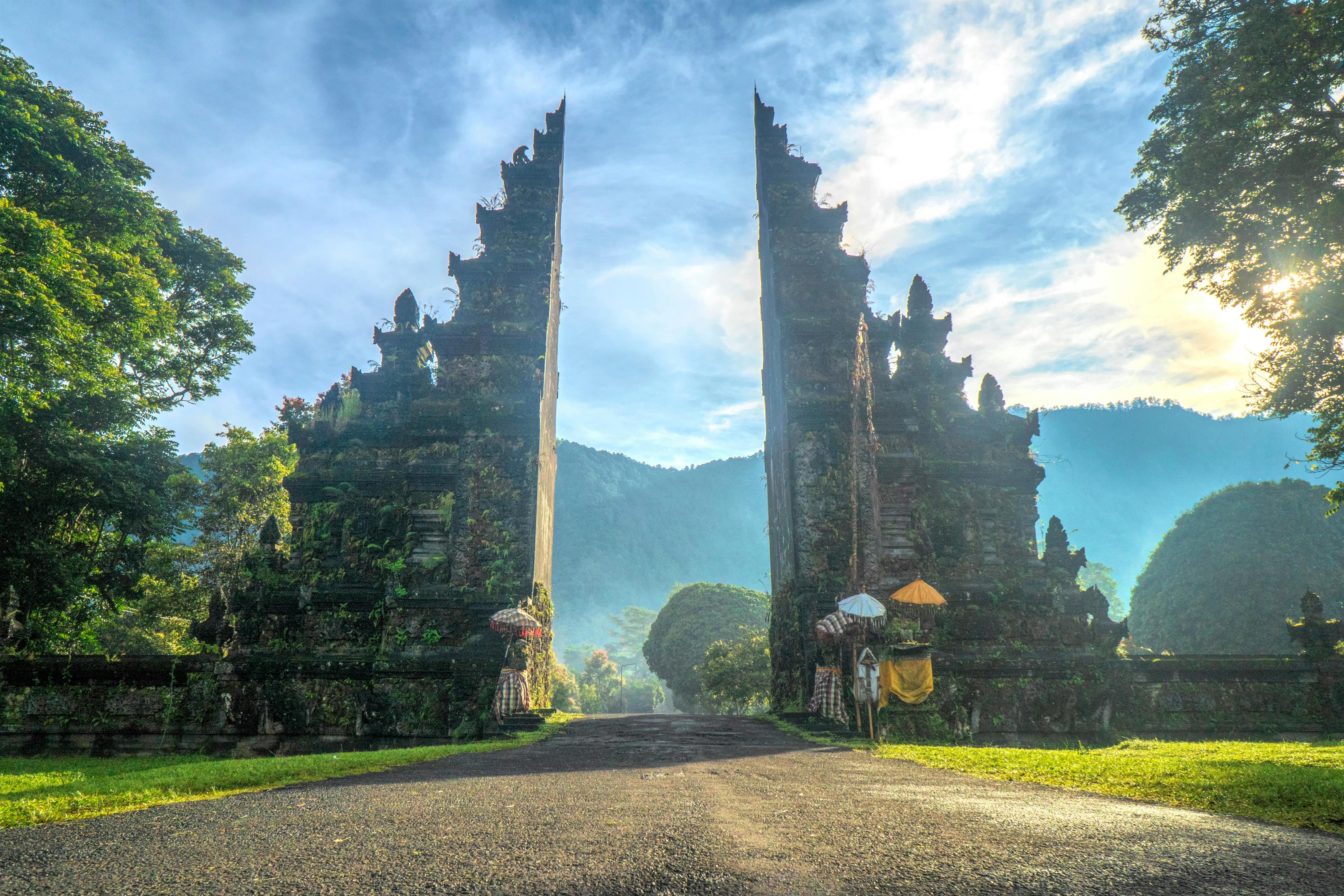1. Geography and Climate
Bali is part of the Republic of Indonesia, and its capital city is Denpasar. The island is approximately 5,780 square kilometers (2,231 square miles) in size, making it the 12th largest island in Indonesia. Bali is known for its diverse landscapes, including:
- Mountains and Volcanoes: The island is dominated by volcanic mountains, with the most famous being Mount Agung, an active volcano that holds spiritual significance to the Balinese people.
- Beaches: Bali is famous for its beautiful beaches, including Kuta, Seminyak, Jimbaran, and Uluwatu, which offer excellent surfing, swimming, and relaxation spots.
- Rice Terraces: The picturesque Tegallalang Rice Terraces in central Bali are iconic for their lush green scenery and traditional terraced farming practices.
- Waterfalls: Bali is home to many stunning waterfalls, such as Gitgit Waterfall, Tegenungan Waterfall, and Sekumpul Waterfall, attracting tourists who enjoy hiking and photography.
Bali enjoys a tropical climate, characterized by distinct wet and dry seasons. The dry season lasts from April to September, with sunny weather ideal for beach activities, while the rainy season occurs from October to March, bringing lush greenery to the island.
2. Culture and Religion
Bali is known for its unique Balinese Hinduism, a mixture of Hindu, Buddhist, and local animist traditions. It is one of the few places in the world where the majority of the population practices this form of Hinduism, distinct from the predominant Islam in Indonesia.
- Temples: Bali is home to numerous temples, each serving as an important center for worship and cultural practices. Some of the most famous temples include:
- Uluwatu Temple: A clifftop temple overlooking the ocean, offering a spectacular view and popular for its Kecak dance performances at sunset.
- Tanah Lot: A stunning sea temple built on a rock formation, known for its picturesque setting during sunset.
- Besakih Temple: Bali's mother temple, located on the slopes of Mount Agung, is one of the island’s most sacred and largest temple complexes.
- Festivals and Ceremonies: The Balinese people celebrate a wide variety of festivals, most of which are religious in nature. The Galungan festival celebrates the victory of good over evil, and Nyepi, the Balinese Day of Silence, marks the start of the Balinese New Year. During Nyepi, the island comes to a halt, and the streets are empty, except for large and colorful Ogoh-Ogoh statues paraded before being burned to symbolize the banishment of evil spirits.





